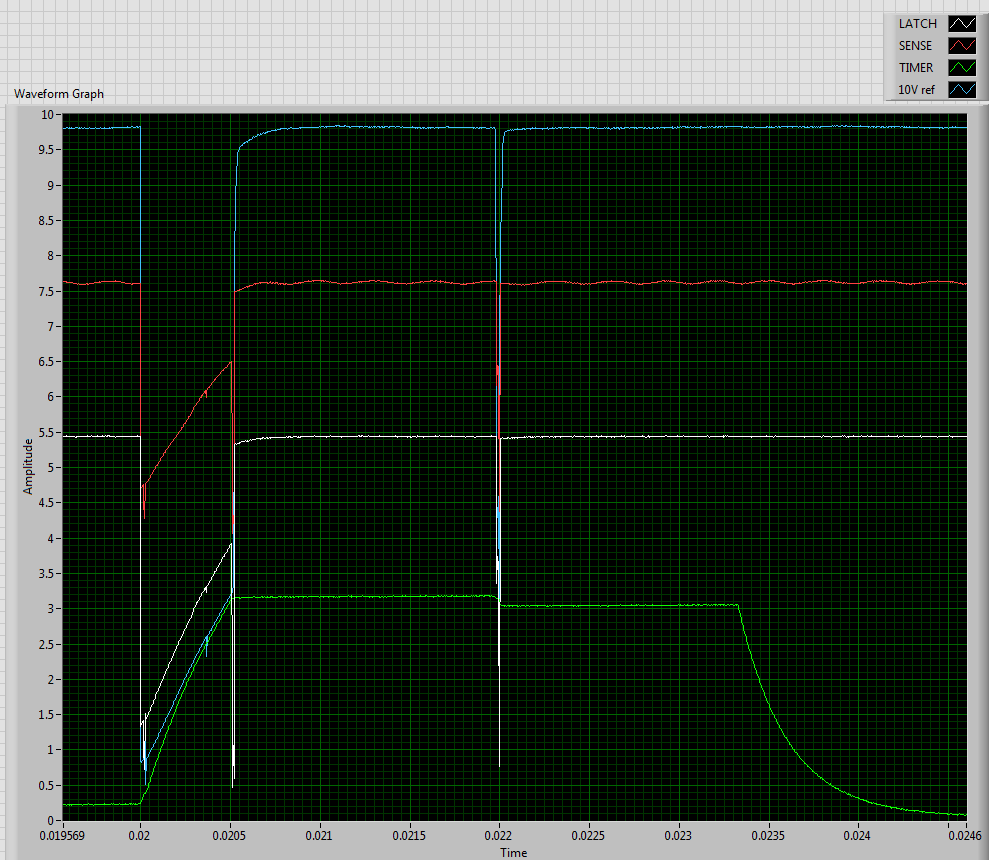I have a circuit that has been in use for years and in at least 100 units, but there have been one or two returned for repair that seem to have a faulty LM339 at the root of their problems. The circuit is a latching over-current sensor that uses a quad comparator LM339N to detect excessive current, start a capacitor timer, and set a latch if the timer timer times out.
The reported problem was that the latch would occasionally set when there was no excessive current. Upon investigation we were able to replicate the problem but saw that not only did the latch occasionally set for no good reason, but far more often the output of the latch would briefly fall without setting the latch, violating the rules of the comparator. Digging deeper I found several aspects of the circuit that I think can only be explained by faulty IC, but wanted to understand better how this could be the behavior of the IC before assuming so.
This graph is one of the 251 events captured over the course of 20 hours where the fault reporting output dipped below 4V. The first trace to look at is the white one which is the scope trigger, showing that one of the two comparators whose outputs are tied together pulled low. The next thing to notice is the blue and green traces. Neither of these two inputs should have budged as there is nothing going on to the sensor. The green trace rising to 3V while being pulled down with 470Ω indicates to me more than 6mA being injected into the node from the comparator input at pin 4. Meanwhile the 10V reference falls below a volt despite the 12V rail not moving a bit, indicating a 50uA sink at the pin 5 input. The two traces stay 80mV apart as they rise together. The next thing to notice is the red trace which falls below the 5.5V reference without setting the latch at pin 9.
It's as if the comparator breaks all rules for itself over the course of this 500us. Then for reasons unknown, the 6mA current source releases at .023s and the 470nF discharges into the 470Ω resistor with expected time constant.
I've reviewed the supply for aberrations that could explain this. I've checked the sensor input. I've checked the static levels (shown in the schematic). My next move is probably to replace the IC and re-collect the same data to see if that fixed it. But I'm hoping someone can explain what causes the two inputs to snap together like this.
Thanks
Rob Hingle


